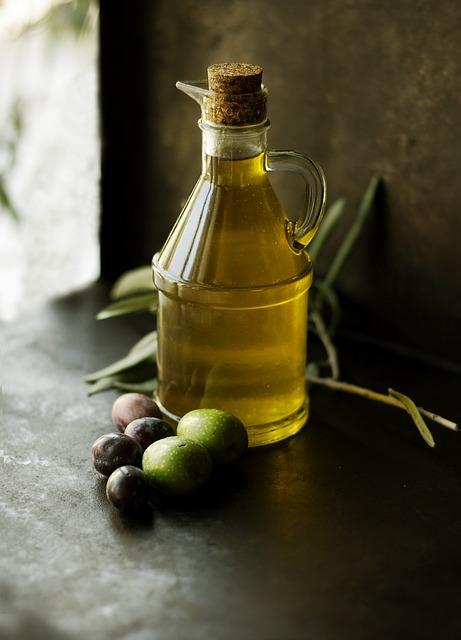Are Natural Oils Clogging Pores for Some Skin Types
In the quest for radiant and healthy skin, natural oils have emerged as a beloved staple in many beauty routines. Celebrated for their nourishing properties and eco-friendly appeal, these oils promise to hydrate, heal, and rejuvenate. However, beneath their glossy allure lies a simmering debate: Are these natural elixirs friend or foe to our pores? As diverse as the individuals who use them, skin types respond differently to the application of oils, leading to a pressing question for skincare enthusiasts everywhere. This article delves into the nuanced relationship between natural oils and various skin types, exploring whether these organic wonders are indeed the secret to a flawless complexion or an unsuspecting culprit in the battle against clogged pores.
Understanding Skin Types and Natural Oil Compatibility
Understanding how natural oils interact with different skin types is crucial in achieving optimal skincare results. Skin types—ranging from oily to dry, sensitive to combination—each have unique characteristics and needs. The key lies in identifying the oils that harmonize with your skin’s natural sebum production. For instance, those with oily skin might benefit from lighter oils like jojoba or grapeseed, which are non-comedogenic and closely mimic the skin’s natural oils, thus balancing sebum production without clogging pores.
On the other hand, individuals with dry skin might lean towards richer oils such as avocado or argan, which offer intense hydration and nourishment. However, it’s essential to be mindful of certain oils that could potentially lead to clogged pores, especially for acne-prone or sensitive skin types. Consider avoiding or limiting oils like coconut and olive, which, while nourishing, have a higher comedogenic rating. Here are some tips to ensure compatibility:
- Conduct a patch test before fully integrating a new oil into your routine.
- Look for oils labeled as non-comedogenic to minimize pore-clogging risks.
- Adjust oil usage based on seasonal changes and environmental factors.

The Science Behind Oil-Induced Pore Blockage
When it comes to the interaction between natural oils and skin pores, understanding the intricacies of pore anatomy and oil composition is key. Human skin is dotted with tiny openings known as pores, which serve as gateways for sebum—a natural oil produced by sebaceous glands. While sebum is essential for maintaining skin hydration and protecting against environmental stressors, certain natural oils can mimic or amplify its properties, potentially leading to congestion. This happens because oils vary in their comedogenic ratings, a scale that measures the likelihood of a substance to clog pores. Oils like coconut and palm, with higher comedogenic ratings, are more prone to causing blockages, especially in individuals with oily or combination skin types.
- Oil Molecular Size: Larger molecules may sit on the skin’s surface, increasing the risk of pore blockage.
- Skin Type Sensitivity: Oily skin types may be more susceptible to clogging, as excess sebum combined with additional oils can overwhelm pores.
- Oil Composition: Oils rich in linoleic acid, such as grapeseed oil, are generally less likely to clog pores compared to those high in oleic acid.
Ultimately, the interaction between oils and pores is a dance of chemistry and biology. While some oils may harmonize with the skin’s natural processes, others can disrupt the delicate balance, leading to the dreaded pore blockage. Therefore, selecting oils based on their properties and compatibility with one’s skin type is crucial for maintaining a clear and healthy complexion.

Identifying Oils that May Cause Congestion
When it comes to skincare, not all oils are created equal. Some can be a blessing for your skin, while others might be the sneaky culprits behind those unexpected breakouts. Understanding which oils might be congesting your pores is crucial for maintaining a clear complexion. Here’s a guide to help you identify potential pore-cloggers:
- Coconut Oil: Beloved for its hydrating properties, coconut oil can be a double-edged sword. Its comedogenic rating is high, meaning it might lead to clogged pores, especially for oily or acne-prone skin types.
- Wheat Germ Oil: Packed with vitamins, this oil sounds like a dream. However, its rich texture can be too heavy, potentially causing congestion for some skin types.
- Cocoa Butter: While it’s excellent for deep moisturization, cocoa butter is another oil with a high comedogenic score, which might spell trouble for those prone to acne.
- Olive Oil: A kitchen staple, olive oil is often touted for its skincare benefits. Yet, its thick consistency can lead to clogged pores if not used cautiously.
Being mindful of these oils and their impact can help tailor your skincare routine to suit your unique skin needs. Opting for non-comedogenic oils or products can be a game-changer in your quest for clear skin.

Expert Tips for Choosing the Right Oils for Your Skin
When it comes to selecting the perfect oils for your skincare routine, understanding your skin type is crucial. Different skin types react uniquely to oils, and what works wonders for one person might not be ideal for another. Here are some expert tips to guide you:
- Know Your Skin Type: Before choosing an oil, determine if your skin is oily, dry, combination, or sensitive. Each type has specific needs, and knowing yours can help you avoid unnecessary breakouts.
- Look for Non-Comedogenic Oils: If you’re prone to acne or have oily skin, opt for oils labeled as non-comedogenic, meaning they are less likely to clog pores. Examples include jojoba oil, argan oil, and grapeseed oil.
- Consider the Oil’s Consistency: Lighter oils, such as squalane or hemp seed oil, are generally better for oily or acne-prone skin, while thicker oils like avocado or olive oil are more suited for dry or mature skin.
- Patch Test New Oils: Always perform a patch test when trying a new oil. Apply a small amount on a discreet area of your skin to ensure there are no adverse reactions before incorporating it into your routine.
By following these tips, you can find the right oil that complements your skin’s unique needs, ensuring a balanced and radiant complexion.
In Retrospect
As we close the chapter on the intricate relationship between natural oils and our skin, it becomes clear that the world of skincare is as diverse as the skin it aims to nurture. Just as each drop of oil holds its unique blend of properties, each person’s skin tells its own story. While natural oils may be the golden elixir for some, offering nourishment and a radiant glow, they may not be the perfect fit for others, potentially playing the villain by clogging pores and causing breakouts.
In this delicate dance of skincare, knowledge becomes your greatest ally. By understanding your skin type and its specific needs, you can make informed choices that harmonize with your natural beauty. Remember, the quest for healthy skin is a personal journey, one that invites exploration and experimentation. Embrace the process, and allow your skin to guide you towards what truly makes it thrive.
So, as you venture forth in your skincare endeavors, armed with insights and curiosity, may you find the perfect balance that leaves your skin feeling cherished and luminous. After all, the true essence of skincare is not just about the products you apply, but about listening to and honoring the skin you’re in.


